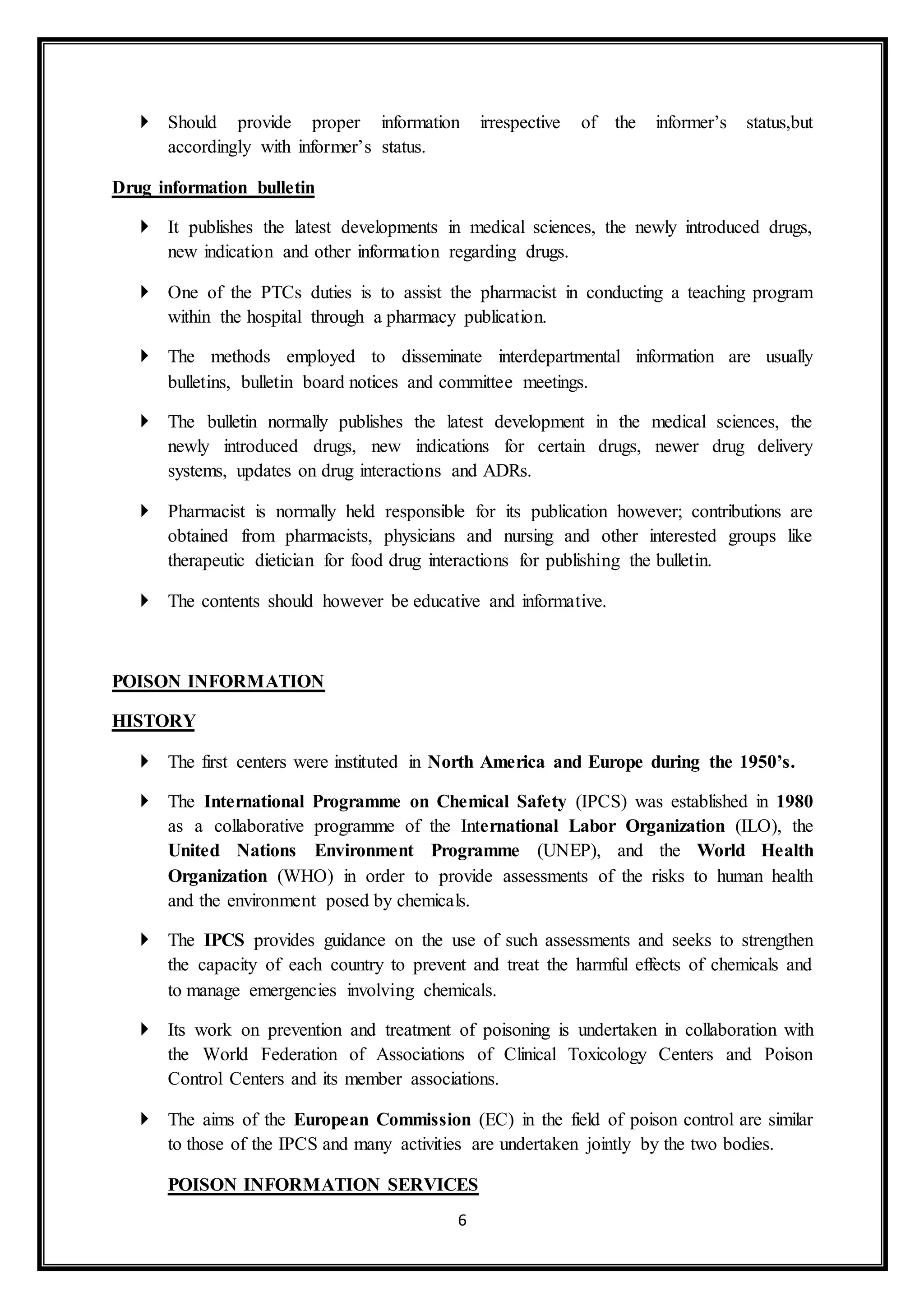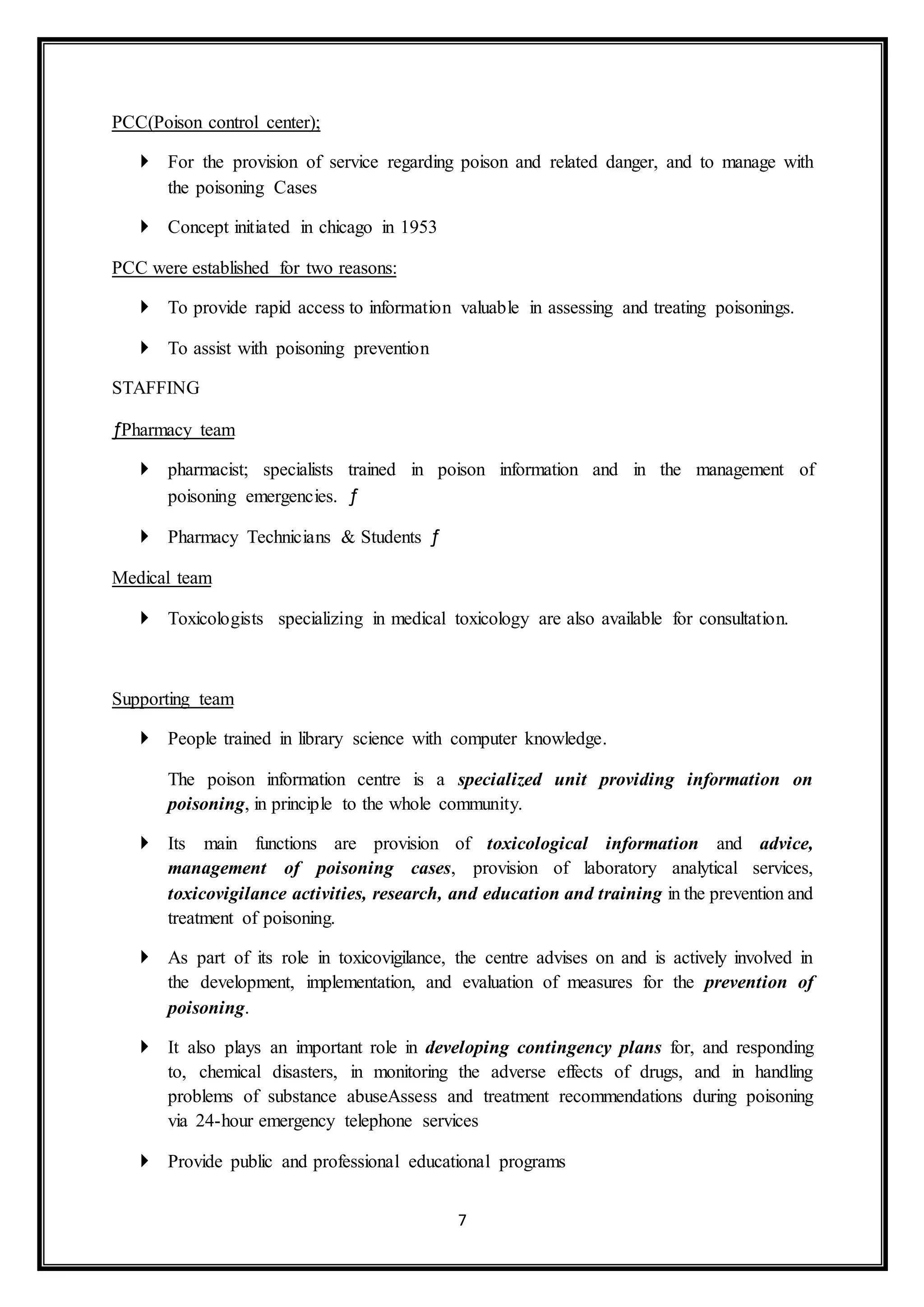The document discusses drug information centers and poison information centers. It provides details on:
- The history and development of the first drug information centers (DICs) and poison control centers (PCCs) in the 1960s in the US and other countries.
- The aims of DICs and PCCs, which include providing drug and poison information to health professionals, developing treatment guidelines, conducting research and education.
- The staffing of DICs and PCCs, which typically includes pharmacists, pharmacy technicians, toxicologists and other professionals.
- The services provided by DICs and PCCs, such as answering drug and poison inquiries via phone/email, publishing









